Maintaining Your Mailing List: Essential Activities for Optimal Performance
Your mailing list is one of your best marketing assets is something you’ve been told ad nauseam. And truthfully so too!
And because it’s an asset, you need to carry out maintenance tasks, just like you get your car serviced, your investment portfolio reviewed or your home repainted.
Here’s a list of 5 maintenance activities you’d want to carry out to be sure your list remains clean and your email marketing proceeds without hiccups.
1. Audit your CTA
Subscribers sign up based on what you promise them. Till the time they get your first newsletter, the sign up Call To Action (CTA) is all they have to understand your value proposition.
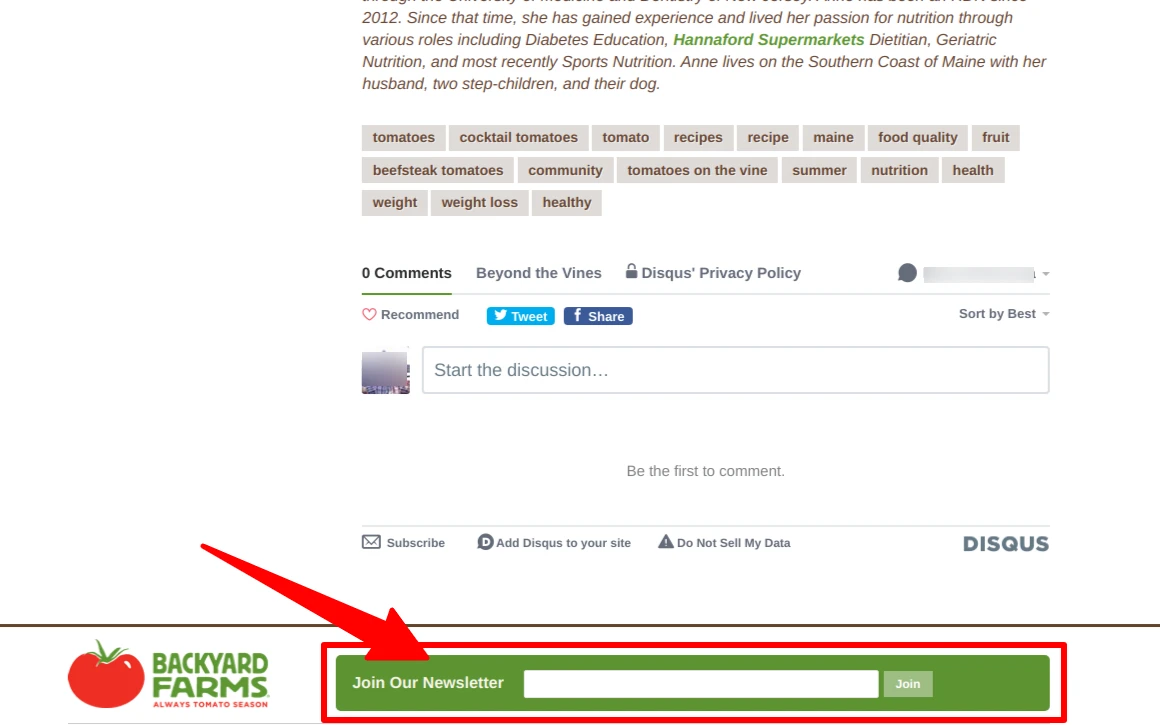
The image above is from BackyardFarms. They’ve kept their ‘Join Our Newsletter’ CTA quite empty leaving users with questions like: Would the newsletter contain gardening tips? Would the newsletter have recipes? Would the newsletter explain why organically grown foods are superior? They haven’t told you anything.
That doesn’t mean it’s a glaring mistake on their part. Maybe the newsletter is so well-known within the relevant circles, there’s no need to elaborate. But if you were to copy the same without proper research, you’d perform rather badly.
Today, people are getting increasingly wary of sharing their email address. In absence of a clear message as to what to expect in newsletters, people might be reluctant to share their email address.
Do this: Just like you conduct a website audit, small pieces of communications need audits too. Audit your CTA for clarity, brevity and desirability. Is it clear enough that the reader can understand it without reading it twice? Is it short enough that visitors don’t want to skip it? Is the message so compelling that it makes signing up highly desirable?
How often: About once a quarter
2. Critique your signup form
Go back to your signup form and critique your entire form, not just the CTA.
Let’s look at three examples and see why each one is designed that particular way.

The MarketingProfs signup form is simple and brief. It requires you to fill up only one field (your email address), making things extremely easy for you. The rest of the message is used to explain what value you’ll get by signing up.
Now let’s compare it with Iterable’s form for their event.
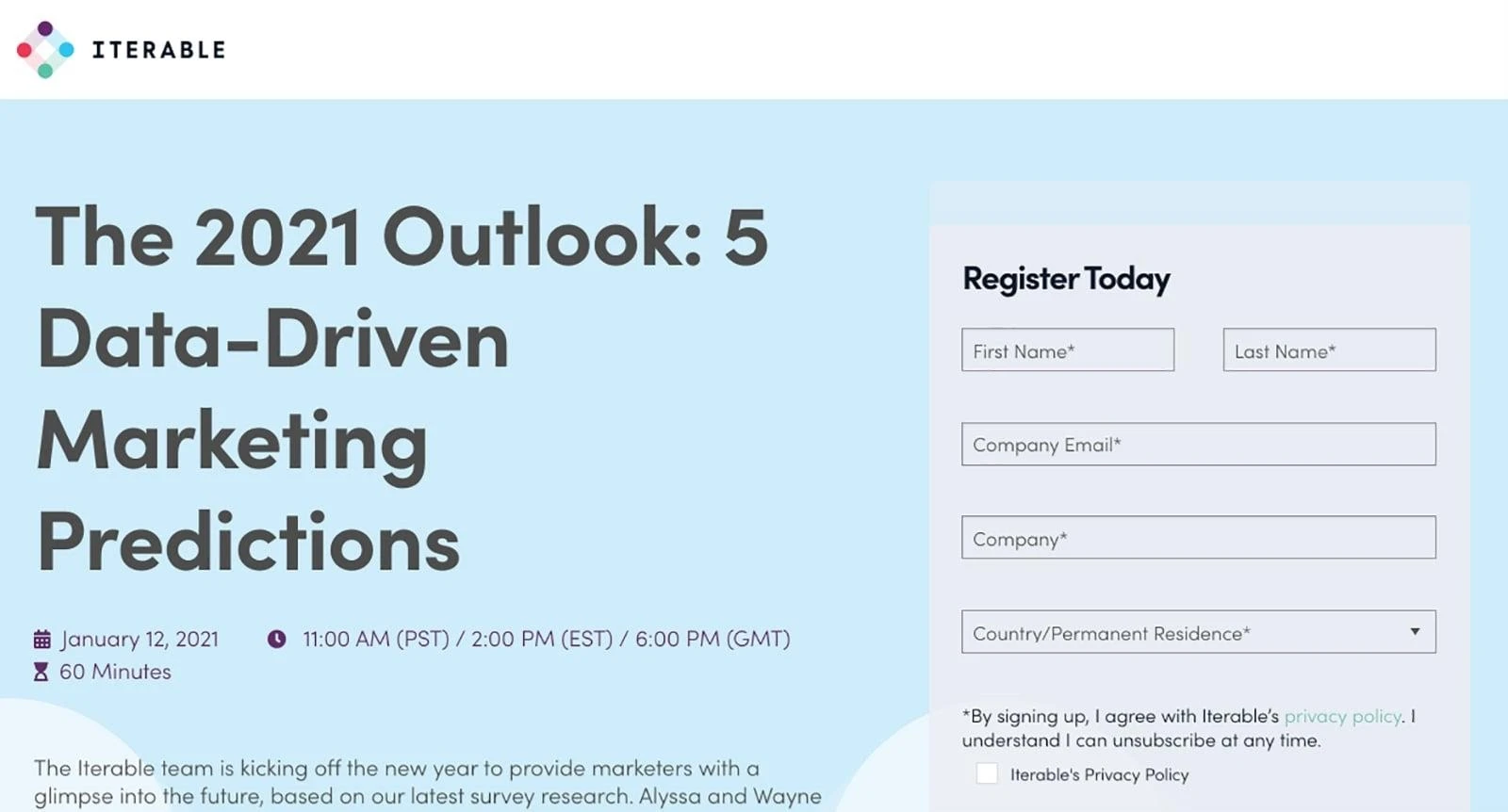

This one’s slightly longer. The fields you need to fill in occupy nearly half the signup page (First name, Last name etc). But there’s a very strong reason behind it. The signup form is for a webinar, for which there will be a limited number of seats available.
By making the signing up slightly more detailed, Iterable makes sure only serious professionals attend the event. If the signing up were watered down, there’s a chance less committed individuals might signup. That’d keep some serious committed professionals out and Iterable’s resources might be (mostly) wasted on people who aren’t their target group.
Now let’s look at Single Grain.
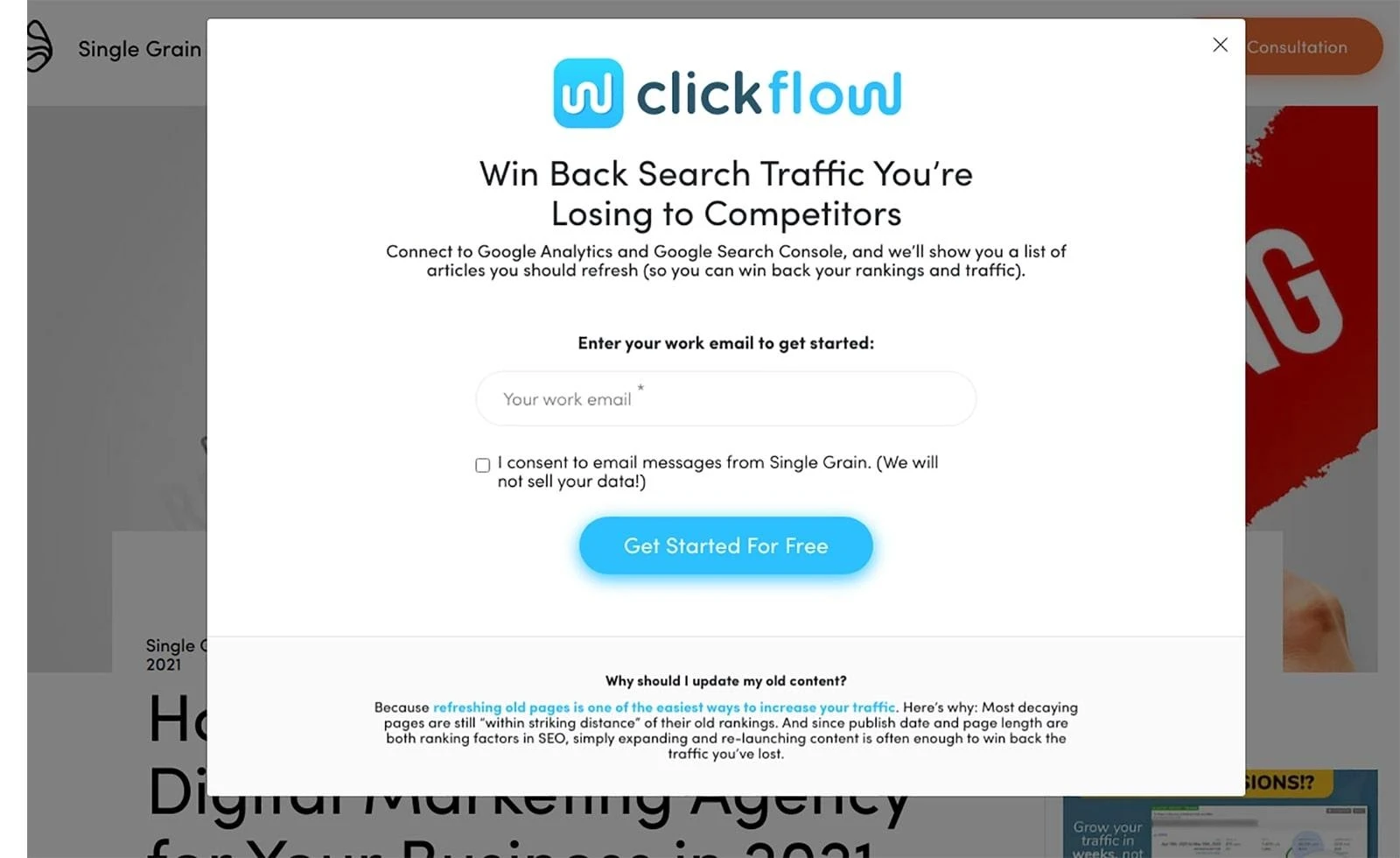

Single Grain invites people to sign up, but their message is quite elaborate. That’s also because people aren’t signing up for a newsletter, they’ll be signing up to start a trial.
Here, Single Grain wants to make sure people fully understand what they’re signing up for. On the top, the headline clearly explains the value proposition. The button also has a purposeful text: instead of saying, “Click here” or “Sign me up”, it says “Get Started For Free”. This further reinforces the idea that you’re signing up for a free trial and not for a newsletter.
Do this: Review your signup form in context of the purpose of the form. Are you inviting people for a one-time event? Or for a newsletter? Or maybe for a trial? Be sure you ask information that matches the purpose of the sign up form.
As a thumb rule, when people are just entering your marketing funnel, you should ask only for the basic information (email + name, or only email). However, when people enter your funnel at a higher stage, you can ask for more detailed information.
How often: About twice a year
3. Clean up your mailing list
One estimate suggests that about 22% of the email addresses on your mailing list are likely to become invalid within a span of 1 year. That’s about 1 out of 5.
So what can you do about it?
To get the full benefits of email verification, you should regularly scrub your mailing list in order to remove ineffective or invalid email addresses. Choose an email verification tool that lets you clean lists and also help you with real-time email verification, without compromising security or accuracy.


A bulk email verifier tool verifies your email addresses and classifies them as per the quality of the email addresses (Valid, Invalid, Disposable etc). Based on that, you can retire the bad ones and reorganize your mailing list.
How often: About twice a year
4. Review where you collect emails
This tip is especially important if you see an unusually poor engagement or very high unsubscribe requests.
If you’re like most businesses, you typically collect email addresses from your blog. And that’s quite relevant, because visitors to your blog will almost always be people who are somehow interested in the kind of stuff you sell or write about.
However, if you accept guest posts, you’ll want to be careful.
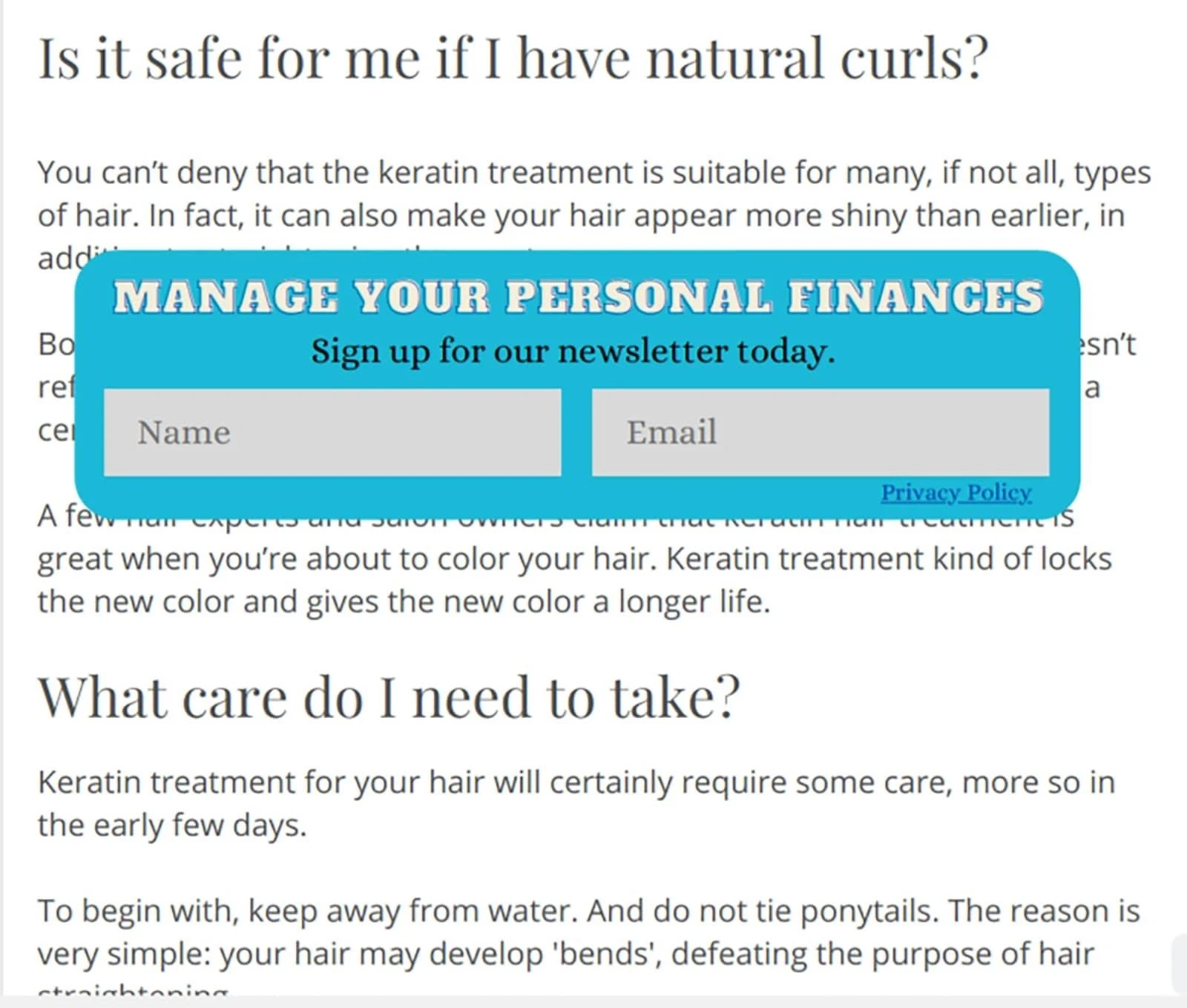
![Hypothetical image]
Let’s say Janice runs a blog on personal finance and she has accepted and published a guest post on keratin treatment.
The hypothetical image above shows the popup for a newsletter, superimposed over the keratin treatment article. Because personal finance and keratin treatment aren’t related, the popup would interrupt the reading experience.
But more importantly, there’s a chance that a few people might sign up without fully understanding that the newsletter is all about personal finance and will have nothing to do with keratin treatment.
That means that although Janice might see a small rise in the number of subscribers for a while, many of them may soon find the newsletter irrelevant and will quickly unsubscribe.
Do this: If you see substantial unsubscribe requests, go revisit the places you’re getting subscribers from. Be sure you’re asking people to subscribe only at relevant places.
How often: About once a quarter
5. Respect changing preferences
If you aren’t tracking the changing tastes of your prospects and clients and delivering per those changes, even your most loyal subscribers will drop off sooner or later.
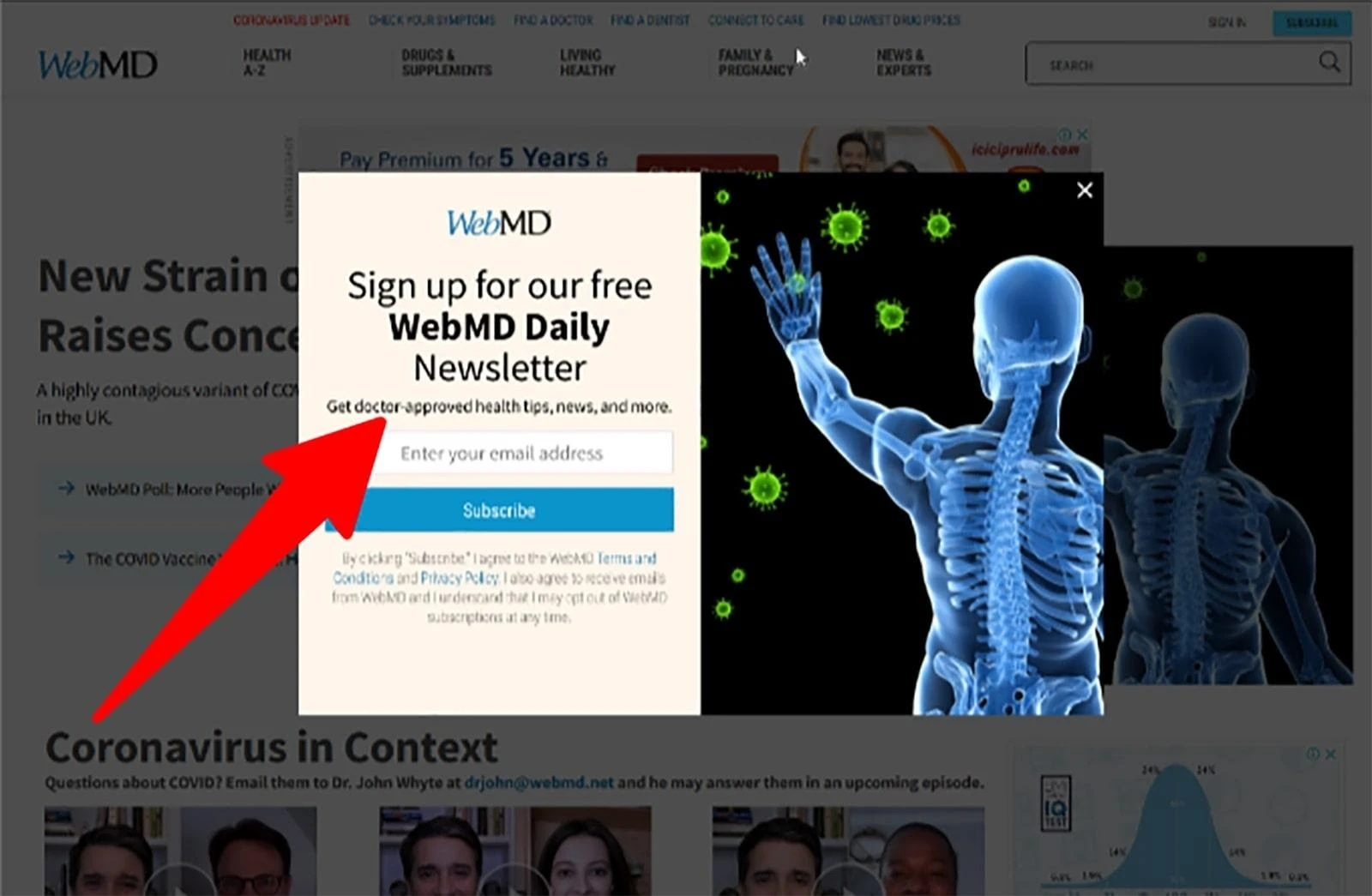

The CTA on WebMD is consistent with its image, namely advice from doctors and medical professionals. Now compare it with Healthline (image below).


While Healthline operates in nearly the same space as WebMD, they’ve chosen to focus on the ‘wellness’ part of the story. This reflects the growing global interest in staying healthy and fit. As a result, their CTA talks about health advice and nutrition (notice the word ‘doctor’ doesn’t appear in their CTA).
Do this: This is a relatively long-term activity. Study how your market is changing and assess if you’re doing enough to cater to the changing tastes and preferences of your target audience. As always, it’s important to differentiate between a passing fad and a market segment that isn’t going to disappear any time soon. Make sure your focus is reflected in your CTA as well.
When studying market changes annually, consider how your Healthcare Software Marketing Agency can align with evolving healthcare trends and preferences, such as identifying the best EMR for small practice, ensuring your offerings resonate with your target audience’s needs and are reflected in your calls to action (CTAs).
How often: About once a year
Conclusion
Just like the prized machinery of a manufacturing plant, your marketing assets need to remain well-oiled in order to keep producing at peak levels.
Among the many things you need to keep reviewing, your mailing list is one of the first. You need to regularly audit your CTA and take a hard look at your overall popup design and message. You will also want to check if you’re collecting the email addresses from the right places. Moreover, it’s important to keep your mailing list clean, free from fake or invalid addresses. Finally, don’t forget to keep track of the changing preferences of your subscribers.
Remember, a little maintenance can improve your mailing list greatly and increase your marketing ROI substantially. More power to you, marketers!
About the Author
Mayank Batavia is Head, Marketing and Partnerships, at QuickEmailVerification. In addition to the exciting world of email and email marketing, he enjoys solving math puzzles.
